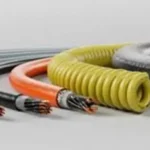Understanding the various parts of a sink is essential for effective maintenance and troubleshooting. A typical sink comprises several key components, each serving a specific function to ensure proper operation.
1. Basin
The basin is the bowl-shaped part of the sink that holds water. It comes in various materials, such as stainless steel, porcelain, or composite, and is designed to collect water from the faucet.
Also Read : Understanding Blinker Duration: A Comprehensive Guide To Turn Signal Timing
2. Faucet
The faucet controls the flow of water into the basin. It includes several parts:
- Spout: The part where water exits into the basin.
- Handles or Levers: Used to control water flow and temperature.
- Aerator: A mesh screen at the spout’s end that regulates water flow and reduces splashing.
Also Read : Why Truck Bed Liner Won’t Fly Away: Secure Installation Explained
3. Controls
Controls allow you to turn the water on or off and adjust the temperature. They can be single-lever styles that rotate to control water temperature or separate left and right hot/cold controls. A variety of styles mean you can pick the one that functions and looks best in your home.
4. Drain Assembly
The drain assembly facilitates water removal from the basin and includes:
- Strainer or Basket Strainer: Placed in the drain opening to catch debris and prevent clogs.
- Strainer Flange: The metal rim that holds the strainer in place.
- Tailpiece: A vertical pipe connecting the drain to the P-trap.
5. P-Trap
Located beneath the sink, the P-trap is a U-shaped pipe that traps debris and prevents sewer gases from entering the home. It also helps in retrieving small items accidentally dropped down the drain.
6. Water Supply Lines
These lines deliver hot and cold water from your home’s main supply to the faucet. They are typically flexible tubes connected to shut-off valves.
7. Shut-Off Valves
Situated under the sink, these valves control water flow to the faucet, allowing for maintenance without shutting off the main water supply.
8. Mounting Hardware
These components secure the sink and faucet in place, ensuring stability and proper alignment.
9. Overflow
Found in some sinks, the overflow is a small hole near the top of the basin that prevents water from spilling over by directing excess water to the drain.
10. Garbage Disposal (Optional)
Common in kitchen sinks, a garbage disposal grinds food waste into small particles that can pass through plumbing without causing clogs.
Understanding these parts and their functions can aid in diagnosing issues and performing basic repairs, ensuring your sink operates efficiently.
FAQ
- What is the purpose of the P-trap under the sink?
- The P-trap traps debris and prevents sewer gases from entering the home.
- How do I stop water flow to my sink for repairs?
- Use the shut-off valves located under the sink to control water flow without affecting the main supply.
- What is the function of the sink’s aerator?
- The aerator regulates water flow into multiple small streams, reducing the volume of water that flows from the faucet.
- Why is my sink’s overflow important?
- The overflow prevents water from spilling over by directing excess water to the drain.
- Can I install a garbage disposal in any sink?
- Most kitchen sinks can accommodate a garbage disposal, but it’s essential to ensure compatibility with your plumbing and local regulations.










